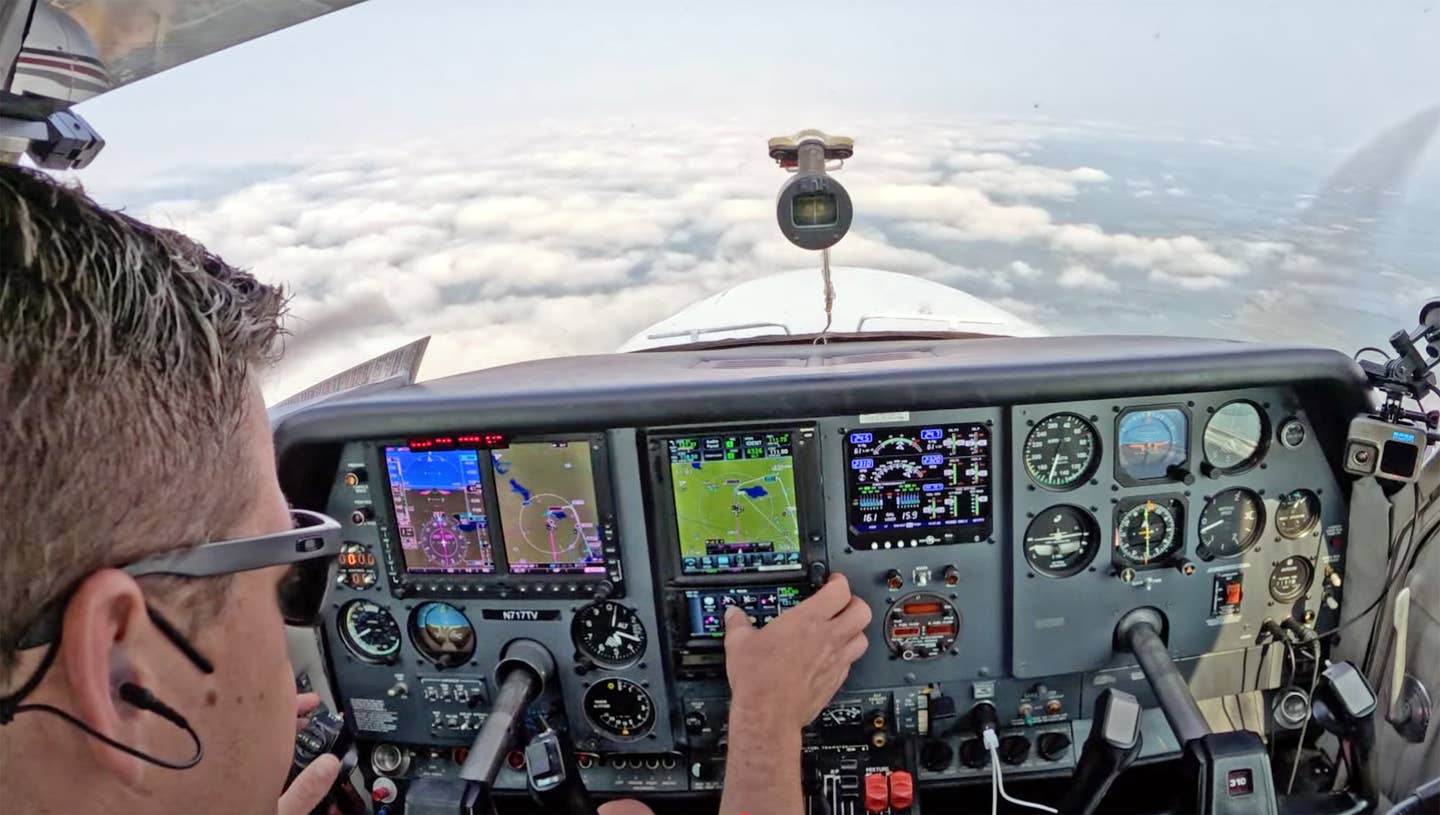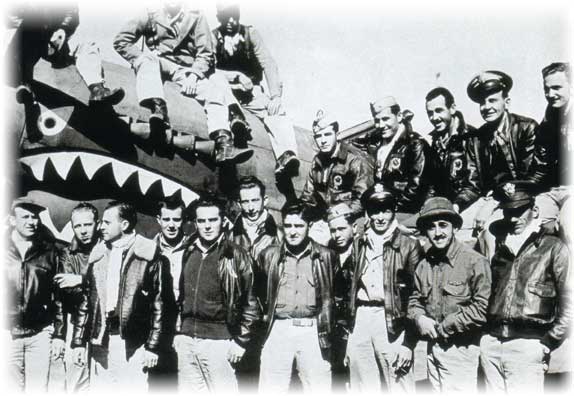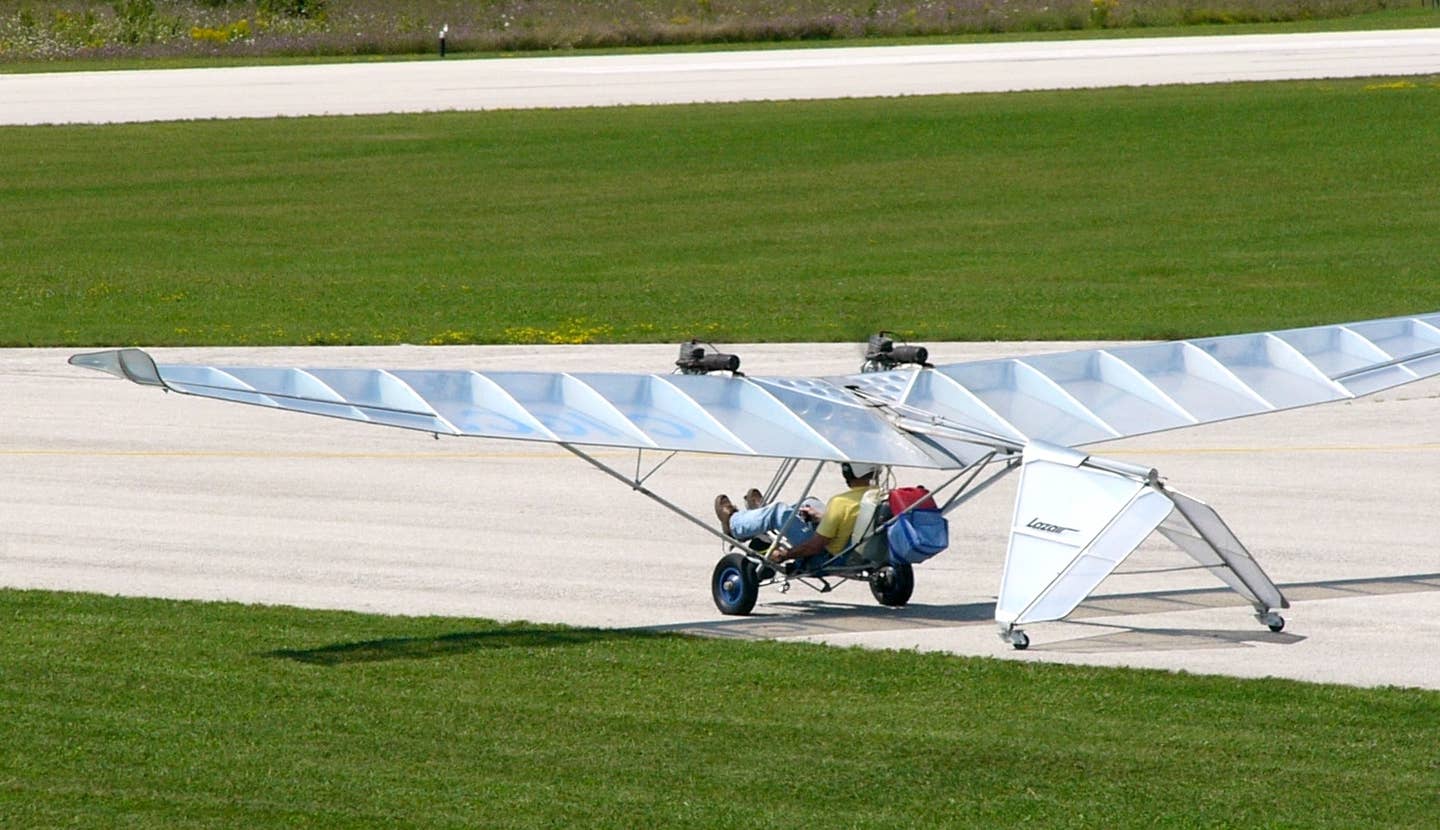Bellanca Viking
The wood and fabric single engine Bellanca Viking still earns respect for its sprightly climb rate, sturdy build and pleasant handling. And there are enough Bellanca Vikings on the market to offer buyers a good choice at remarkably good prices.
In an era when the state-of-the-art aircraft have to be baked in an oven after being laid up in plastic sheets squished together in vacuum bags, it's hard to imagine that a wood and fabric wonder like the Bellanca Viking still exists. But it does. And although there aren't great squadrons of them around, the Viking retains a loyal, almost cultish following.
Why? Because there's nothing quite like it, that's why. The Bellanca Viking's performance isn't stellar, but it's credible with most of its contemporaries, the aircraft handles well with few gotchas and it's so strongly built that owners still delight in showing the famous factory picture of a dozen cheerleaders standing on the wings. "Try that with an aluminum airplane," goes the advertising tag line.
The Viking is nothing if not sturdy. Inside the wing are two laminated wood spars running the length of the wing, connected by a system of ribs. Inside the fuselage is a lattice work of stout steel tubes that form the engine mount, then carry through the fuselage to form the tail. Add laminated spruce forming one axis and a steel roll cage forming the other and you've got a very sturdy airframe with better occupant protection than many modern designs can claim.
Bellanca Viking Model History
The Bellanca Viking's family tree traces its roots back to the Bellanca Cruisaire, a triple-tailed retractable taildragger design reminiscent of aviation pioneer Giuseppe Bellanca's early designs. The first Model 17 Viking appeared in 1967, powered by a 300-HP Continental IO-520-D.
The model evolved gradually, but other than the engine, there were few major changes. The Continental-powered Viking was called the 17-30, while the 17-31, introduced in 1969, was powered by a 290-HP (later 300-HP) Lycoming IO-540, either normally aspirated or turbocharged. Either engine was available for much of the early production run; the 17-31 was discontinued after 1979 and in 1996, the Continental IO-550 was made available as an option. Some earlier airplanes have been retrofitted. The original hydraulic gear and flap actuation system was redesigned midway through the 1968 model year with the introduction of electric flaps.
The Bellanca Viking's original fuel system—five tanks, two fuel selectors, eight possible combinations of selector settings and several sometimes incomprehensible gauges—was simplified to a left, right and aux system in 1974. After that mod, the fuel mismanagement accident rate for Vikings dropped dramatically. Production continued at a modest rate—in the peak production year, 1973, just under 200 were built—significant volume by modern standards, but a trickle for that era.
Bellanca Aircraft Corp. went bankrupt in 1980, the year things turned sour for the entire industry. In 1984, the company got back on its feet and started building Vikings again on a limited, custom-order basis. Only nine were built in 1984 and 1985 and none in 1986. About 38 were produced between 1984 and 2005.
In 2001, Bellanca went bankrupt again. In 2002, a group of six Bellanca enthusiasts bought the company from the state of Minnesota and established Alexandria Aircraft Co. LLC. Their immediate goals were to provide technical support and parts to owners and A&Ps in the field.
By early 2010, however, market conditions no longer supported this enterprise and the assets of the factory were put up for auction.
There are about 1360 or so Vikings in the fleet, most of which are Continental-powered. The owners of AALLC also reduced parts prices substantially and rewrote the type certificate for Continental-powered Vikings, which helped prospective buyers looking to replace a run-out 520 with a 550.
Bellanca Viking Market Scan
And there are enough Bellanca Vikings on the market to offer buyers a good choice at remarkably good prices. According to the Aircraft Bluebook Digest, early Continental-powered 17-30s hover around $30,000 while mid-1970s Vikings are in the high $40s. The latest models, which the Bluebook shows as 2001, are valued at $206,000. We found several for sale in Trade-A-Plane online. All things considered, these prices represent a good value, but one owner told us that prices have dropped recently.
Look for one that has flown regularly and, above all, has been hangared or at least sheltered. Moisture in the wings is the biggest threat to the value and the airworthiness of the airplane and drying them out at 160 knots is the best thing for them, owners say.
Bellanca Vking Performance and Payload
By modern standards, the Bellanca Viking is a credible but not exceptional performer. Normally aspirated models cruise at around 160 knots, 10 knots slower than heavy singles like the Cessna 210 and A36 Bonanza. The turbo helps, of course. Haul the airplane up to FL200 and you'll see 190 knots. On the other hand, a Viking will outclimb a 210 or an A36.
The book claims 1210 FPM and owners report similar numbers. For all its power, the Viking's useful load is typically 1000 pounds or so and even less with a lot of equipment on board. That's in the range of an average 200-HP retractable, such as a Mooney or Arrow. On top of this, the big engine requires a lot of fuel, which further limits the cabin load.
Fuel capacity is either 60 or 75 gallons, but owners say there don't appear to be many 60-gallon versions. In fact, aux tanks in early models bring the total to 90 gallons. "With full fuel, my 1973 Viking will carry three passengers, or two passengers and baggage," one owner told us. This payload is typical of all aircraft of this era. Commented another about his turbo: "Lycoming engine, heavier than the Continental, plus two turbos, equals a pathetic full-fuel legal load of two adults plus bags." Compare that to a Cessna 210, which has a useful load pushing 1400 pounds in some cases and can typically haul 90 gallons and four people plus baggage.
But the Viking has always been more sports car than pickup truck. With all four seats occupied by FAA-standard humans and 100 pounds of baggage, the airplane can ship maybe 40 gallons of avgas—enough to fly 250 miles with IFR reserves. However, most owners of post-1973 Vikings comment that they're content with a choice of full seats or full tanks and insist that their bladders usually give out before the fuel does.
Viking Bellanca Handling
"The way the Viking handles will put a smile on your face; very smooth and responsive controls," said Lange White about his 1967 Viking. White isn't alone with his sentiments.
The Viking is almost universally praised for its light, smooth aileron control. "The Viking is a very stable aircraft in turbulence and IMC conditions with no Dutch roll due to the very ample vertical stabilizer. It rolls and handles like a sports car—not like a station wagon," reports owner David Alger. "My Viking has the same empty weight as the Lance I used to fly, about 2225 pounds. But the control feel and harmony are just wonderful. Low-speed control on the Viking is excellent and makes short field operations easy, and the stall is very mild. It's also a very good IFR platform, not twitchy and pleasantly light on the controls," says Mark Sellers.
Landing can be tricky, however. Power off, with gear and flaps out, the Viking has an awesome sink rate that owners liken to Steinway pianos. The steep descent angle, however, does allow a skilled Viking pilot to make short landings and the excellent climb rate enables the airplane to depart from short fields just as well.
The Bellanca Viking's cabin dimensions are modest at best, a reflection of its 1930s design heritage. "The cabin is small for two guys my size," reports a 210-pound Viking pilot. Even a rabid pro-Viking zealot admitted that the cabin is "not roomy." Not as tight as a Mooney, maybe, but no 210, either.
Interior appointments draw raves. Many Vikings have a leather or crushed-velour upholstery that puts the chintzy interiors of Pipers and Cessnas to shame. Cabin noise, on the other hand, is high, although some owners tell us it's no worse than other aircraft. "A Viking is certainly no louder than any other single engine GA aircraft of similar vintage. Anyone flying any single-engine GA airplane without ANR won't be able to hear much after a while anyway," says Craig Gifford.
We don't think there's much to differentiate the two normally aspirated engines from an ownership point of view. The turbo is another matter. Prospective buyers should carefully consider whether the extra acquisition cost, complexity, fuel consumption and potential overheating problems are worth the benefits of turbocharging. Since it's a turbo-normalized system—you get full power all the way to the flight levels rather than an extra boost on the ground—in most cases (outside the Rockies, at least) the answer is probably not.
One reader who owned both advised against the turbo version. The gear system is robust, but there's apparently some confusion in the field about exactly how to adjust the limit microswitches to make the system work well.
The Bellanca Viking emergency gear extension is two-thirds foolproof and one-third tricky. When the mains retract, they fold forward and are held there under pressure, so dumping pressure causes them to fall into the slipstream and lock.
Step one of the emergency extension procedure is to slow the airplane to 90 knots, so the over-center spring can push the nosegear through the slipstream and let it lock. No cranking or huffing and puffing necessary—just slow the airplane down.
Hangar Your Bellanca Viking
Owners were all but unanimous in emphasizing the need to hangar a Viking. "Absolutely imperative!" said one.
"A crucial necessity," echoed another, although one reader insisted a shade hangar in a dry climate is good enough.
"I keep my Viking inside. But I would keep any airplane I fly IFR inside. Wood deterioration is a function of moisture content. Keep your wood dry and rot can't happen. Simple as that. That said, I often fly in rain and leave the plane outside on trips," reports Mark Sellers.
The primary reason is to prevent the accumulation of moisture that can trigger wood rot in the wing, but it's also a good idea to protect the fuselage fabric from ultraviolet radiation and moisture.
The "lifetime" Dacron covering will last a long time in a hangar, but owners report the need to recover in as little as six years if the airplane is left outside.
Factory support for the model is, well, iffy. Still, owners say parts are generally available from Alexandria Aircraft LLC and the Web site is still up at www.bellanca-aircraft.com. Furthermore, the airplane's rag, tube and wood construction mean that experienced mechanics can fix about anything on the airplane.
"I personally don't worry about AALLC because it's really the shops at Rocket, Weber, Witmer and MARS (nicely covering all parts of the U.S.) that keep these airplanes flying. The future of 100LL poses a far greater risk to the Viking future than the status of the factory," says Craig Gifford.
Bellanca Viking Owner Comments
I bought my first Viking in 1969. Since then I have had a total of five Vikings and have over 6000 hours in them. I suppose this in itself would be a good testimonial. My current model is a 1998 Viking with an IO-550 engine and one of the last ones built.
The Viking is a pleasure to fly. Its systems are very simple, making repairs much less expensive than the "iron" aircraft. I often fly with very heavy loads, finding that the performance is not diminished significantly.
I have inadvertently gotten into icing situations several times in the past 40 years and on one occasion accumulated a large amount of rime ice at 12,000 feet. I knew I could get down to an altitude where the temperature was above freezing, so I just kept going to see what the airplane would do. Of course, the airspeed dropped significantly, but I was able to maintain altitude with no problem. I think the relatively thick wing has a significant advantage in that respect.
With the IO-550, I run lean of peak all the time and true 170 knots, saving 2 GPH. Running ROP adds about 7 knots. I find the IO-550 about 10 knots faster than the IO-520 and I think most people have experienced the same. Annuals run about $3000 depending on how much extra stuff I want to have done.
Rocket Aviation in Plainview, Texas, does all the major repairs and they are never more than a phone call away.
I keep the airplane hangared all the time (except when traveling) and have never had a problem with the wood. Think about it. There are 200-year-old homes made of wood and amazingly they are still standing. I plan to fly the Viking until I quit flying.
David Alger
Lago Vista, Texas
I began my "affair" with Vikings when I was in high school in Plainview, Texas, back in the early 1990s. At Miller's Flying Service (a legend among Bellanca drivers), I learned to fly in a Cherokee 140 and with 54 hours in my logbook, less than a week after my private checkride, I began my checkout in the Viking at the ripe age of 17.
In my flying career, I have flown many types of Piper, Cessna, Mooney, Beech, Cirrus and Diamond aircraft. However, I found myself coming back to the Viking as I shopped. I found a 1989 model that had been meticulously maintained and I bought it in August of 2007. I could not find another airplane that I could purchase in the mid-$150,000 range that had this performance. Bonanzas are twice as expensive in the same vintage and they are slower, but larger inside. Operating costs are about the same as any other airplane in the category.
I generally let Rocket Aviation (formerly Miller's) do my annuals. This is simply because they know the airplane inside and out and are experts on how to detect issues early and fix them efficiently. All my other maintenance is at a local shop. There's nothing really tricky to maintaining a Viking other than keeping it relatively dry.
An annual generally runs me $2000 to $3000 out the door and I always fix everything that even remotely looks like trouble. Insurance runs me around $2300 annually for a $160,000 value.
I can only knock the Viking on two things. One, the baggage area is small. We have to pack in duffle bags and think about everything we take. My wife misses the space our 182 had, but the extra 30 knots in speed is worth it to me!
The landing gear extension speed is pretty slow and this slick airplane can be a challenge to slow down. A speed brake mod would be nice.
Overall, I could not be any happier with my Viking. Everywhere I go, I get comments on it. It has ramp appeal that a 182 or even a Cirrus just cannot have. It is in the same category of efficiency with a Mooney, but has slightly more interior space. It costs half as much as a Bonanza to purchase. It's a simple airplane to fly. Everything feels natural. It's one of those airplanes that you sort of feel guilty when turning on the autopilot.
Ty Flippin
Via e-mail
My Viking is not an antique. It is not a relic or a curiosity that should be surrounded by a rope at the fly-in. It's a working airplane and I use it the way you would use any 300-horsepower, 200-mile-an-hour, complex airplane. I fly about 150 hours per year for business and pleasure, the majority of it IFR. I fly in rain and I tie the plane down outside on trips. It is every bit as useful as comparable airplanes made of metal or plastic. My useful load is 1070 lbs, my full fuel (75 gallons) useful load is 620 lbs.
I have owned my ‘85 Viking for 10 years and the maintenance expenses have been tolerable; about what you would expect from a complex retractable with an IO-550 and parts availability has been good. The factory in Alexandria, Minnesota, is actively supporting and developing the product.
There is, however, no denying my Viking is different from most of what you find out on the ramp. The craftsmanship and variety of skills needed to build an airplane like this kept production numbers low. When I bought my Viking, a couple of airport friends shook their heads and said the wood and fabric would eat me alive.
After 10 years of ownership, I have needed zero wood work and a couple of fabric patches, which were cheap. Admittedly, steel tube fuselages, wood wings and fabric covering have their own set of maintenance issues, but any aircraft material has a life span and ages in its own way. My airplane is now 30 years old and looks pretty good from five feet, but I'm wondering what to do next. For those of us who don't have over half a million bucks for a new four-seat GA plane, refurbishing and restoration is the name of the game.
That's why I am seriously thinking about recovering my Viking. The fabric has an unlimited life, but the paint sitting on top of it does not. I suppose I could do a peel-and-repaint, but I'm looking at a full recover. It won't be cheap, but considering what I'll get when I'm done, it could be worth it. The entire skin of my plane will be replaced (except the fiberglass cowling and the boot cowl) and the entire structure revealed and inspected. The tanks will be dropped out of the wings, tested and reinstalled. With the wings already open, I might as well upgrade to the 84-gallon fuel system found in later model Vikings, which will result in a useful load increase to 1130 pounds. In a world where a Cirrus CAPS parachute repack starts at $10,000 and reskinning a couple of ruddervators on your Bonanza can be breathtaking, spending around $40,000 to get what amounts to a zero-time airframe, plus modern urethane paint that should last for at least another 30 years, doesn't seem so crazy.
None of this expense would make sense if I didn't really like how the plane performs. Remember, this is an airframe designed back when it was the flying qualities that sold airplanes—not big color screens. I reliably cruise at 170 knots. The control harmony is outstanding which makes the aircraft an excellent IFR platform. The low speed control is truly remarkable, and the stall is very mild and predictable, which makes short field operations a pleasure. The ride is particularly noteworthy. The wood spars seem to flex just enough to smooth out the bumps.
Put on a Continental IO-550 turning a three-blade prop, together with a cushy interior, and you get something that goes like a sports car and rides like your grandfather's Oldsmobile.
My only complaint is that my Viking has only adequate interior space. It certainly isn't big and roomy by contemporary standards. Guiseppe Bellanca was a little fella, 5'2", and looks like he weighed 110 pounds. That said, the cockpit ergonomics are excellent and all the controls come to hand nicely. Even the environmental controls are good.
I regularly put four people and baggage in the plane, with the usual trade off for fuel. I flew to AirVenture at Oshkosh this year with three larger than standard-sized guys, a pile of camping equipment and full wing tanks.
Mark Sellers
Philadelphia, Pennsylvania
I first flew the Bellanca Super Viking in the late 1970s when I worked as a rent-a-pilot. On my first flight, before the gear was even up, I knew I was flying something special. I logged about 100 hours in the BSV in the 1970s and enjoyed every one of them.
The Super Viking is like an American muscle car compared to the European imports; it does with horsepower what the others try to do with finesse.
In 2004, I was looking to buy a fast plane for cross-country flights and the BSV made the list with some more common aluminum models. I researched speed, features and prices for a month and the BSV rose to the top of my list. Since owning N4201B, I average about 125 hours a year. I typically fly it on trips exceeding 200 miles primarily for pleasure. Here is a bullet list of some comments:
Pro:
The Viking is cheap to purchase. I saved about $75,000 over similar performance aircraft.
Most parts are readily accessible since very few are proprietary. I had to replace a rudder (corrosion) and found one at salvage for $250.
Very smooth in turbulence. The wing gives much like the 787.
High rate of climb gets one to cruise speed much sooner.
Very few ADs to comply with.
Little if any repairs between annuals.
Very strong airplane in an accident. The cockpit is enclosed in a steel roll cage. An accident in Mexico destroyed two trucks, but the pilot and pax walked away.
Overall, a fun aircraft to fly. Quick on the controls and quite solid in an IMC environment. Some say the elevator is heavy, but I would call that a stable IFR platform. Trim for 100 knots on a radar base and there it stays.
Con:
Tricky for the novice pilot to land. A BSV can be ground looped and one needs to hold the nosewheel off as long as possible.
Snug cockpit. Not as tight as a Mooney, but it's not made for four large men, either. I rarely fly with anyone in the back.
Needs to be stored in a hangar. No issues with leaving it out on trips, but it should be hangared at home. The sun degrades fabric faster than aluminum.
Pre-buy and maintenance needs to be done by someone who knows the BSV. You can spend a lot of money teaching a Cessna mechanic the quirks of the BSV.
Frank Holbert
Via e-mail
I am the ring leader of a four-person co-owner group that shares the first Bellanca Viking built—serial number 30001. I just flew the plane yesterday from Dothan, Alabama, to Birmingham, Alabama, and back. I just paid the bill last month for the annual inspection at a high-end general aviation maintenance shop and it was just under $7000. We had to replace one cylinder.
I've been flying the plane for over three years now, but the logbook shows her first flight as September 20, 1966. The plane was featured on the front cover of the February 1967 Flying Magazine. I'm looking forward to the 50th anniversary of the plane.
Chuck Byrd
via email






